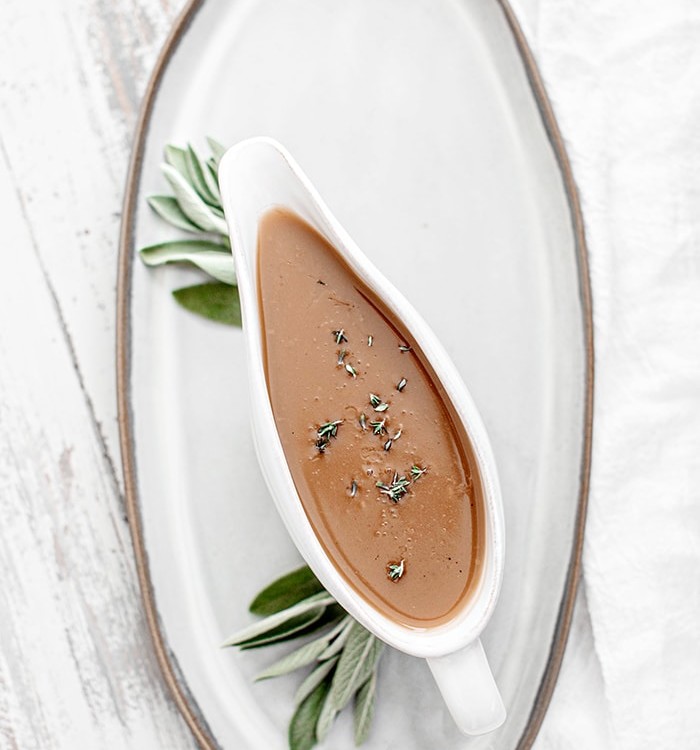
How to Make Turkey Gravy with No Lumps
Making Turkey Gravy from Drippings isn’t hard, but making gravy with no lumps can be! Learn how to make turkey gravy from pan drippings in 5 simple steps, plus my top tips for fixing lumpy gravy.
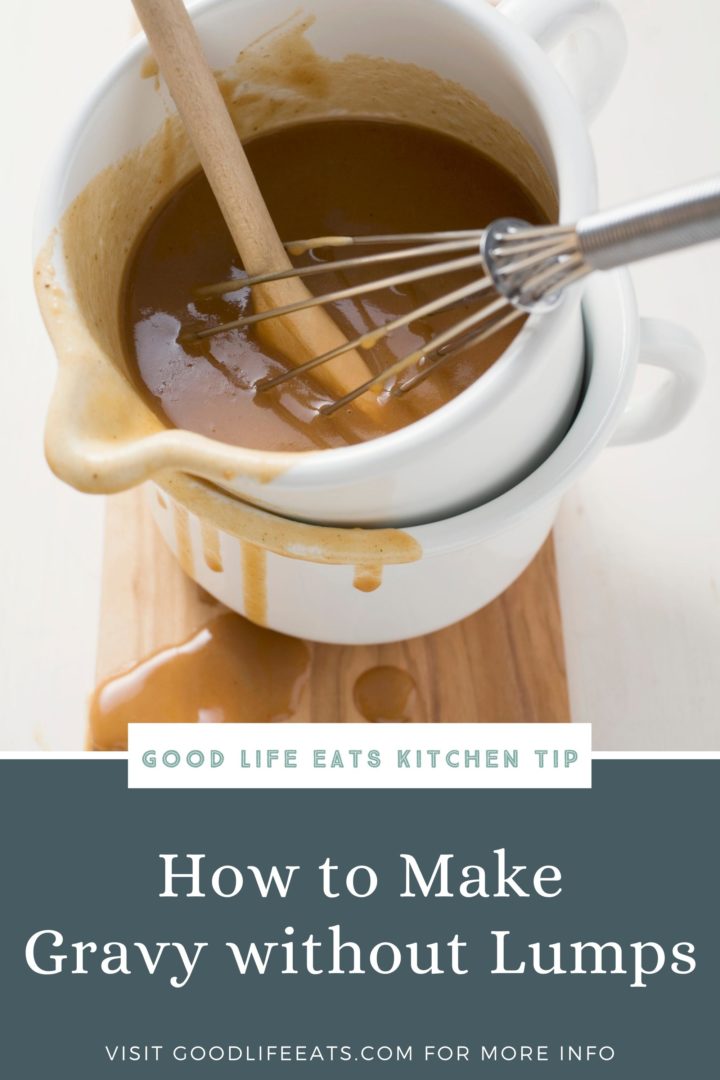
Making Gravy From Turkey Drippings
Are you a gravy fan or a cranberry sauce fan? Personally, I like both, but I often skip gravy in favor of making my cranberry sauce because I know I can easily prepare that a day or two in advance.
However, I don’t mind making gravy if there are others at my Thanksgiving table who would like to enjoy their roasted turkey with a spoonful of gravy made from the flavorful turkey drippings. Gravy is also tasty over a pile of Roasted Garlic Cauliflower Mashed Potatoes.
Making homemade turkey gravy without lumps can sometimes be a tricky task, especially when you’re tired after spending the day preparing your Thanksgiving meal.
To help you out, I’ve broken the task down into 5 simple steps so you can make perfect gravy from turkey drippings every time.
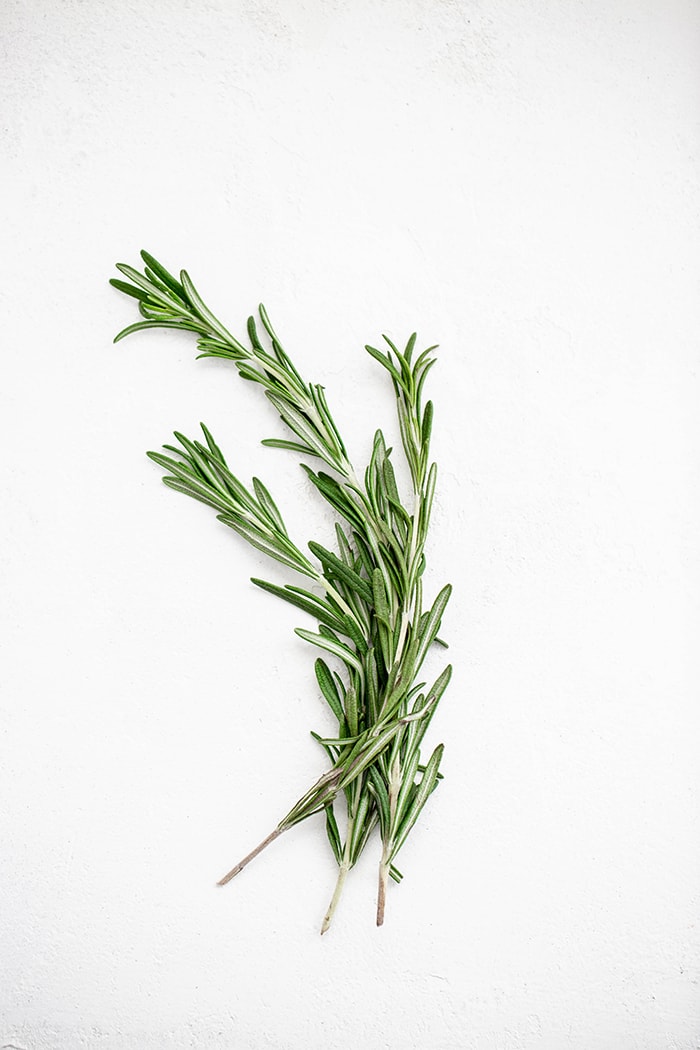
Ingredients to Make Turkey Gravy From Drippings
To make turkey gravy with drippings, here’s what you’ll need:
- Reserved fat from drippings
- Turkey drippings (fat removed)
- Water or chicken broth
- All-purpose flour
- Fresh rosemary, sage, and thyme
- Salt and pepper
For the complete ingredient list and detailed instructions, scroll to the bottom of this post for the FREE printable recipe card.
How to Make Gravy From Turkey Drippings
Making gravy from turkey drippings is much easier than you might think! Here’s an overview of how to make gravy from turkey drippings:
Step 1: Pour drippings from the turkey into a large glass measuring cup. Let sit until all the fat rises to the top. Spoon the fat off of the top of the drippings into a separate container.
Step 2: Add enough broth to the remaining drippings to equal the total amount of gravy you want for your finished product.
- Example: You have 2 cups of drippings and want 3 cups of gravy. You will add 1 cup of broth to measuring cup containing the drippings.
Step 3: In the turkey roasting pan (if it is sturdy, stove-top safe, and not a disposable pan), a cast iron skillet, or sauté pan, add 1 tablespoon of the removed fat per 1 cup of liquid drippings you plan to use.
- Add 3 tablespoons of flour per 4 tablespoons of fat you are using to the pan.
Step 4: Cook the mixture, whisking constantly — I like a flat whisk — over medium for a minute or two to combine well and remove the raw taste from the flour. Very slowly pour in the reserved drippings mixture, whisking constantly as you pour. Bring the mixture to a slow boil over medium heat while whisking.
Step 5: If you would like an herb flavor, add a sprig or two of thyme and/or sage while bringing the mixture to a boil. Then, turn the heat to low and keep warm until ready to serve. Re-whisk just prior to serving. Discard herbs, if using.
The above is simply a quick summary of this recipe. Check out the full recipe in the free printable recipe card at the bottom of this post for all the detailed instructions.
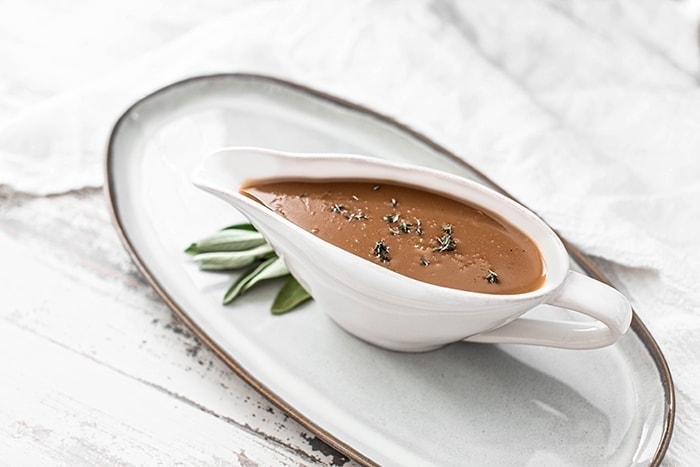
How to Reheat Gravy
To reheat gravy, add it to a skillet or saucepan and then gently heat it over low heat until simmering. Stir the gravy frequently to prevent it from burning on the bottom or forming lumps.
Can You Freeze Gravy?
Yes, very easily! If you have leftovers of this turkey gravy with drippings, don’t throw it out! That’s good stuff, and I’d hate for it to go to waste.
To freeze homemade turkey gravy, spoon it into freezer bags or freezer-safe containers. When you’re ready to enjoy it, set it in the fridge overnight to thaw.
Note that gravies made with lots of milk or cream tend to separate once frozen. It’ll still be safe to eat, but it might look different that it did when you first made it!
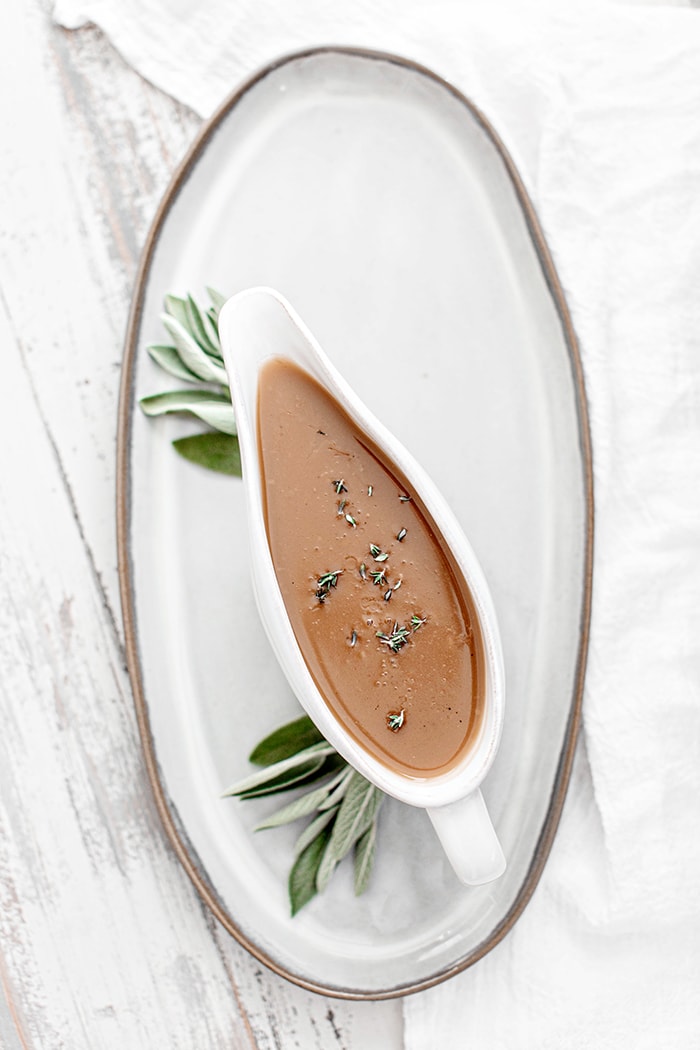
Tips for Making Turkey Gravy with Drippings
If you have brined your turkey, the drippings may be saltier that you intend your gravy to be. In this situation, I add water rather than broth to my drippings.
If you follow my instructions for brining, then you are also adding water to the bottom of the pan during the roasting and this helps dilute the saltiness somewhat.
For the best flavor, I highly recommend using fresh herbs instead of dried. Dried herbs are much more potent and can add an odd texture to the turkey gravy.
How Do I Fix Lumpy Gravy?
If you ended up with some lumps in your gravy, there are two easy ways to fix it: with a strainer or with a blender.
Fix Lumpy Gravy with a Strainer: Place a strainer with fine mesh over a bowl or glass measuring cup. Pour the gravy into the strainer over the bowl and strain out any flour lumps. Then, transfer the lump-free gravy that is in the bowl into your serving container of choice.
Fix Lumpy Gravy with a Blender: Pour the lumpy gravy into a blender, taking care not to fill the blender jar higher than half way. Secure the lid tightly and blend until there are no more lumps. Transfer the gravy back to the pan and reheat to thicken, whisking as you do, until it is desired thickness.
I’ve been known to use both methods on occasion when I haven’t done as good of a job at whisking my gravy as I prepared it. I prefer the strainer method, but if my strainer is already dirty then the blender method works in a pinch.
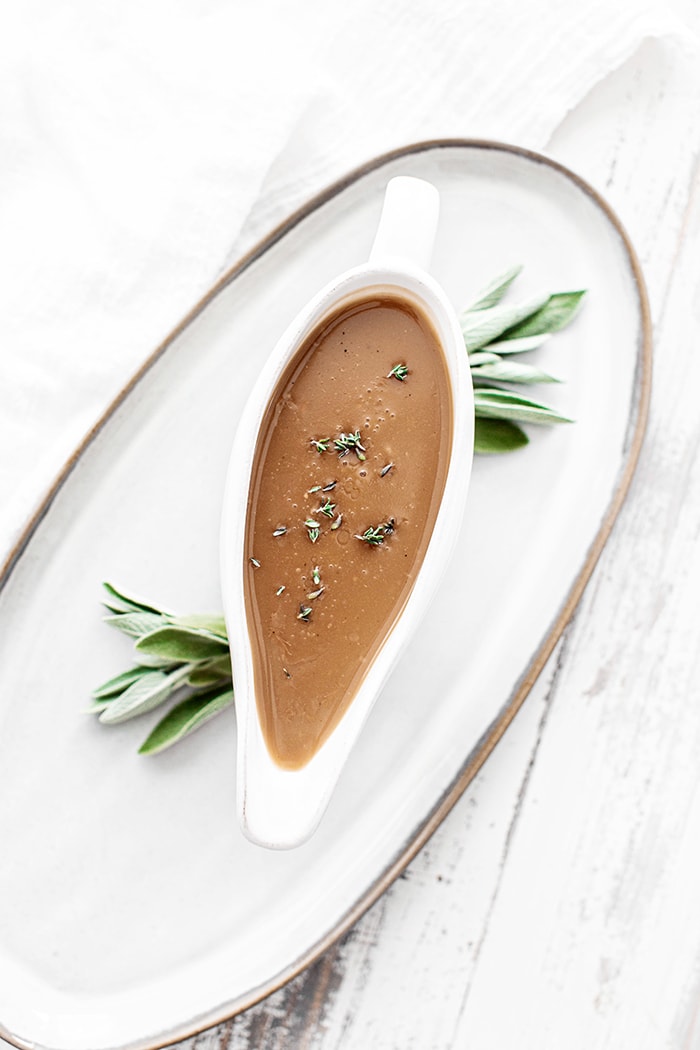
What Can You Substitute for Flour in Gravy?
There are a few alternatives to thickening homemade gravy from turkey drippings without flour or cornstarch: cornstarch or arrowroot powder.
Turkey Gravy with Cornstarch
You can also use cornstarch to thicken this turkey gravy with drippings if you need to make gluten-free turkey gravy. Cornstarch is a good alternative thickening agent if you are avoiding wheat or gluten.
If making turkey gravy with cornstarch, you’ll need to use half as much cornstarch for the same results as achieved using flour.
Turkey Gravy with Arrowroot Powder
If you’re avoiding corn and gluten, you can use arrowroot powder in your homemade turkey gravy. Arrowroot powder is more powerful than cornstarch and even more powerful than flour, so you’ll need much less.
Start with using this rule of thumb when substituting arrowroot powder for flour: 1 teaspoon of arrowroot powder = 1 tablespoon of flour.
Arrowroot powder is the ideal substitute when making homemade turkey gravy for gluten-free, grain-free, and paleo diets.
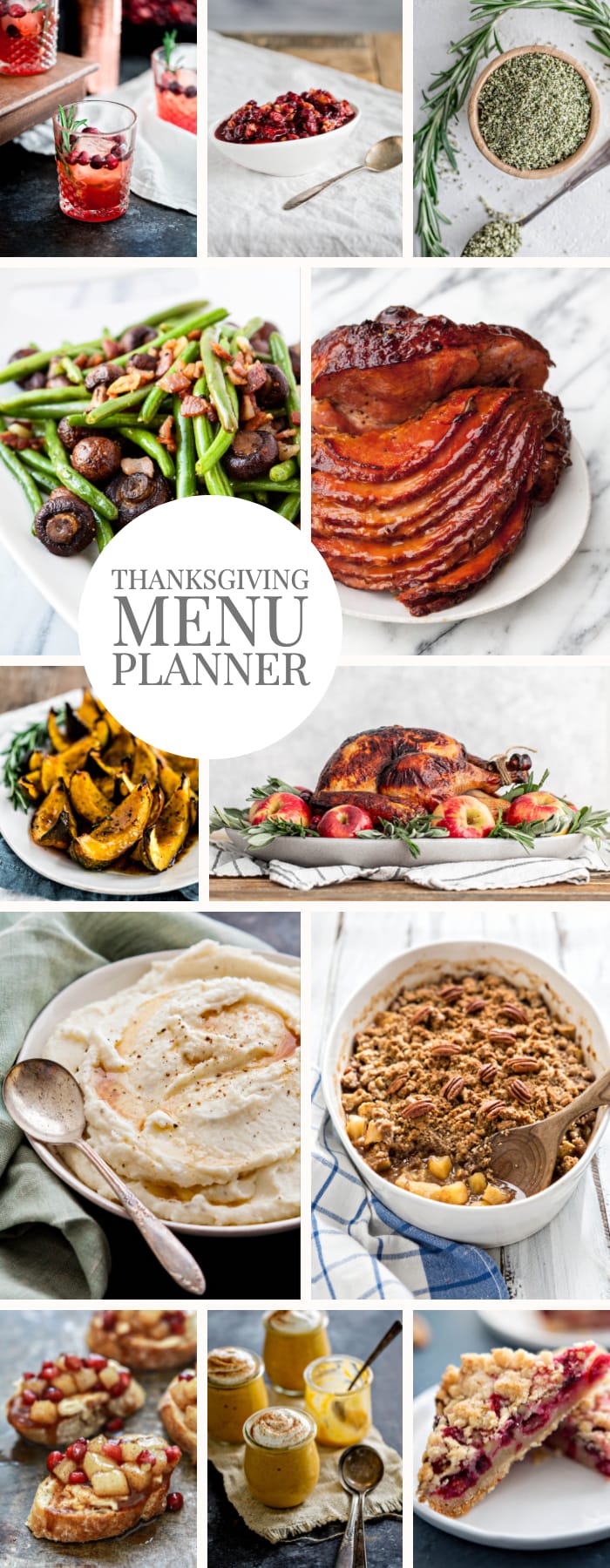
More Thanksgiving Recipes:
This Apple Cider Sage Brine features fresh apple cider, bay leaves, allspice berries, black peppercorn and plenty of fresh sage for a nicely aromatic turkey brine.
Learn How to Make Fresh Herb and Citrus Brine for a stellar turkey! This fresh herb and citrus turkey brine infuses roasted turkey with so much flavor thanks to tons of fresh herbs and citrus peels. Brining really helps keep the meat moist.
And if you’ve ever struggled with roasting a moist turkey, check out my Turkey Roasting Tips – Roast a Moist, Flavorful Turkey. A few small changes can really make a difference when it comes to flavorful and moist or dry and bland. You’ll definitely be happy eating this turkey alongside your homemade turkey gravy!
Was it really Thanksgiving if you didn’t have mashed potatoes on the table? A few of my favorite recipes are these Browned Butter Parmesan Mashed Potatoes, these Blue Cheese Rosemary Mashed Potatoes, and these Roasted Garlic Cauliflower Mashed Potatoes. Turkey gravy with drippings + mashed potatoes = heaven!
If you’re looking for a cranberry sauce recipe, try my Cranberry Orange Walnut Relish or my Red Wine Pomegranate Cranberry Sauce. The relish offers a chunkier sauce thanks to whole cranberries and chopped walnuts.
Still looking for more Thanksgiving recipe ideas? Check out my Thanksgiving Menu Planner for tons of recipes!
What do you prefer to top your turkey with?
Love this post for How to Make Turkey Gravy with No Lumps? Sign up for Good Life Eats email updates and never miss another recipe!
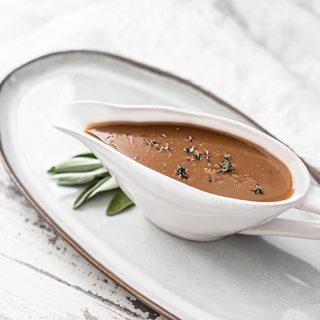
Herbed Turkey Gravy
Thanksgiving is just around the corner. Gravy can either make or break the holiday spread depending on your preparation success. Learn how to make delicious herbed turkey gravy with no lumps!
Ingredients
- 1/4 cup reserved fat from drippings
- 1 cup Turkey Drippings (fat removed)
- 2 cups Water or low sodium Chicken Broth
- 3 tablespoons Flour
- 1 sprig Rosemary
- 1 sprig Thyme
- 1 sprig Sage
- Salt, to taste (if desired)
- 1/4 - 1/2 teaspoon Black Pepper, to taste
Instructions
- Pour drippings from roasting pan into a glass measuring cup or a fat separator style measuring cup. Reserve 1/4 cup of fat in another measuring cup and discard the rest.
- Add enough broth to the remaining drippings to equal the total amount of gravy you want for your finished product. For example, if you have 2 cups of drippings and want 3 cups of gravy. You will add 1 cup of broth (or water or a combination of broth and water) to the measuring cup containing the drippings.
- In the turkey roasting pan (if it is sturdy, stove-top safe, and not a disposable pan), a cast iron skillet or saute pan, add the reserved fat and the flour, whisking to combine.
- Cook the flour and fat mixture for 2 minutes over medium heat to remove the raw taste from the flour. Slowly add the drippings mixture, whisking constantly, to keep the mixture smooth.
- Once all of the liquid has been added, stir in the rosemary, thyme, and sage and bring the mixture to a boil, stirring constantly, and cook for 1 minute. Remove and discard the herbs, season to taste with salt and pepper (if desired). Serve.
Notes
If you have brined your turkey, the drippings may be saltier that you intend your gravy to be. In this situation you may want to add water, rather than broth, to the drippings.
Gluten-Free Tips
You can also use cornstarch to thicken if you need to make gluten-free/wheat-free turkey gravy. Cornstarch is more powerful than flour, so you’ll use half as much cornstarch for the same results as achieved using flour.
If you’re avoiding corn and gluten, you can use arrowroot powder. Arrowroot powder is more powerful than cornstarch and even more powerful than flour, so you’ll need much less. Start with using this rule of thumb when substituting arrowroot powder for flour: 1 teaspoon of arrowroot powder = 1 tablespoon of flour. Arrowroot powder is the ideal substitute when making gravy for gluten-free, grain-free, and paleo diets.
Recommended Products
As an Amazon Associate and member of other affiliate programs, I earn from qualifying purchases.
Nutrition Information:
Yield: 8 Serving Size: 1Amount Per Serving: Calories: 99Total Fat: 7gSaturated Fat: 4gTrans Fat: 0gUnsaturated Fat: 3gCholesterol: 34mgSodium: 147mgCarbohydrates: 3gFiber: 0gSugar: 0gProtein: 6g
GoodLifeEats.com offers recipe nutritional information as a courtesy and is an estimate only. This information comes from online calculators. Although GoodLifeEats.com makes every effort to provide accurate information, these figures are only estimates.
Be sure to follow Good Life Eats on Instagram. Tag @goodlifeeats and include the hashtag #goodlifeeatsrecipes so I can see what you’re cooking up in YOUR kitchen!
Did you make this recipe? I’d love to hear what you thought! Leave me a comment below.
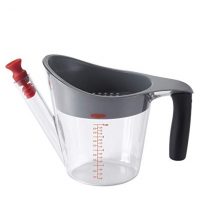
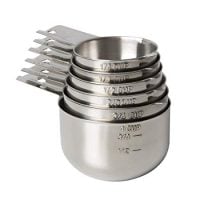
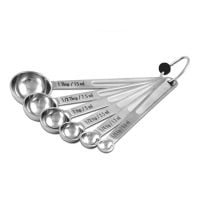
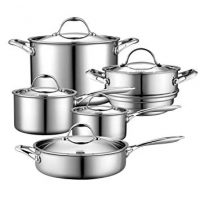
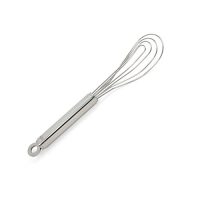
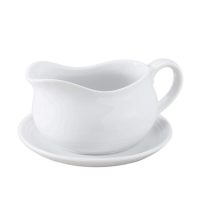
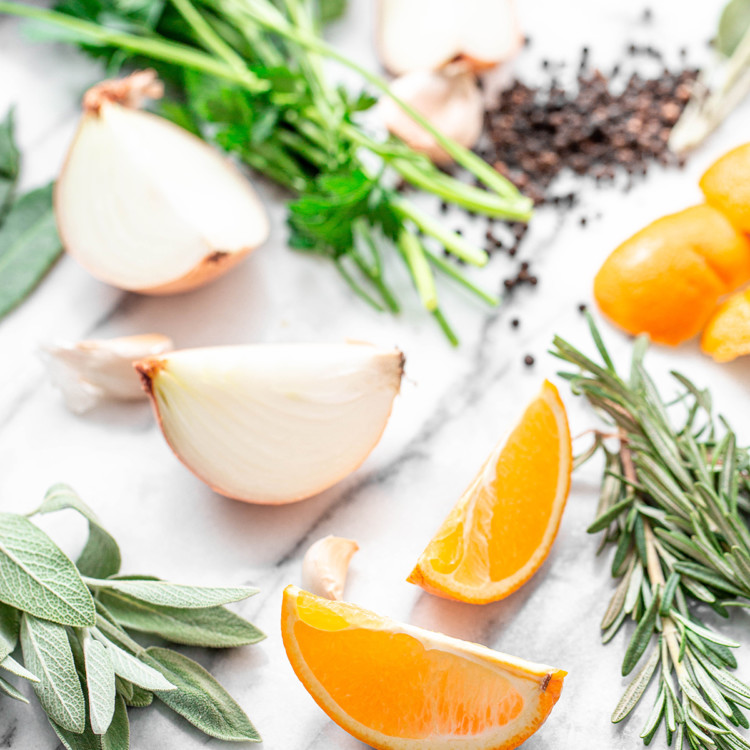
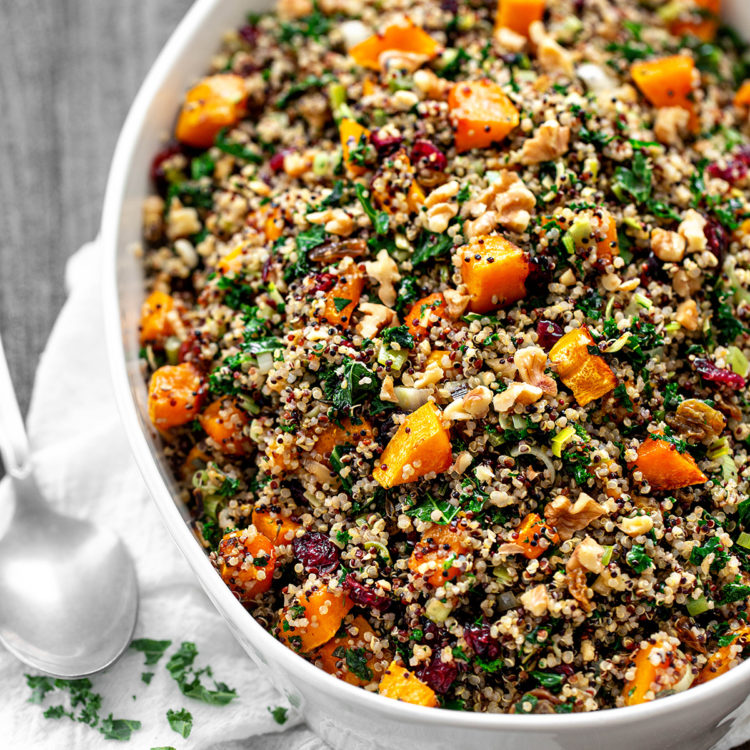

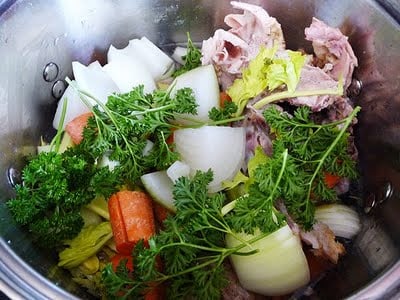
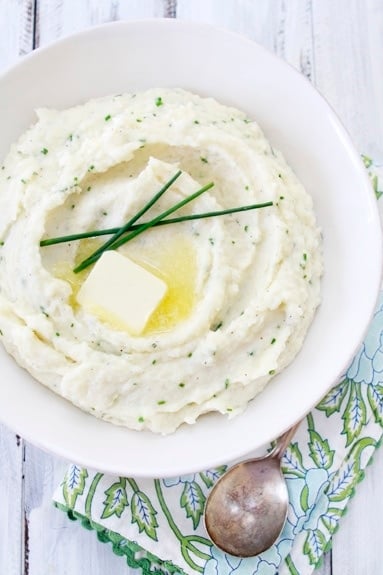
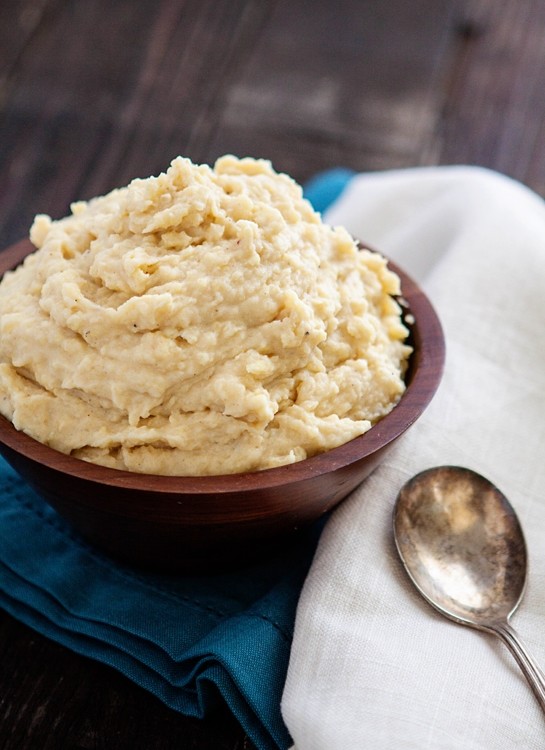
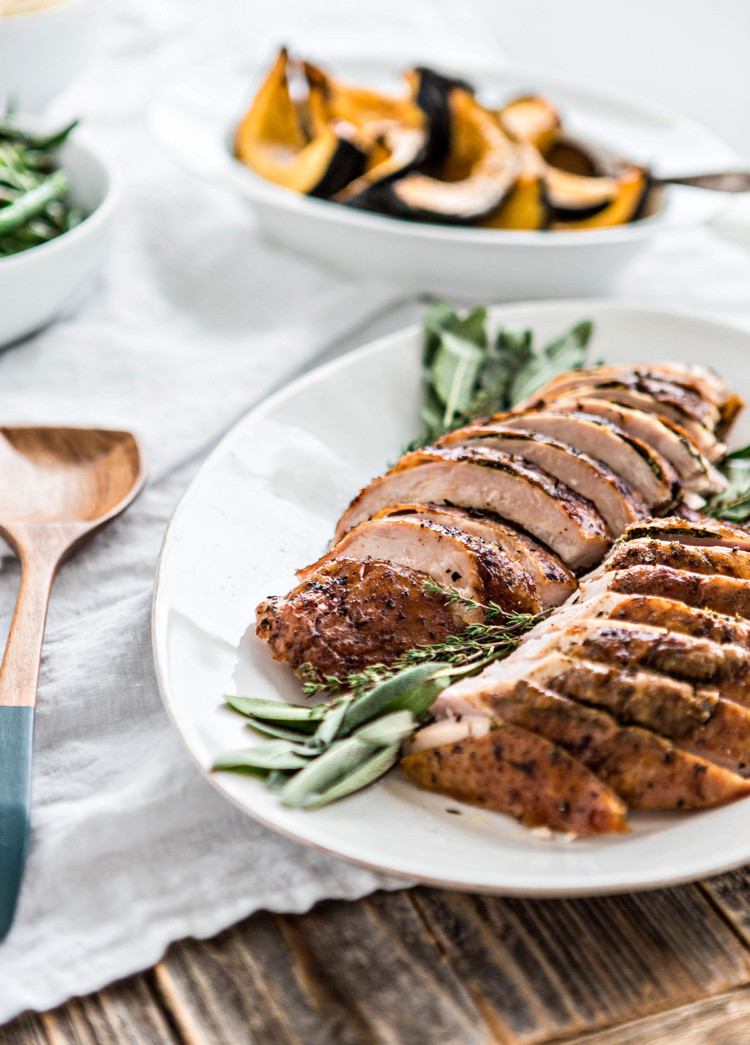
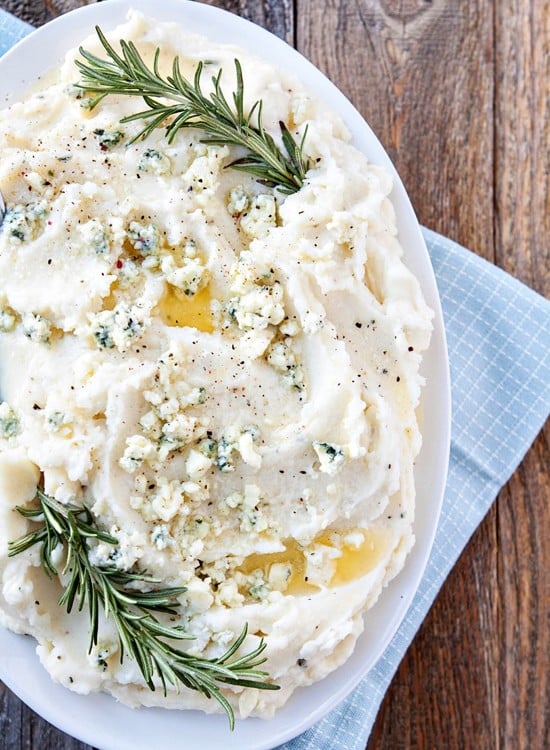
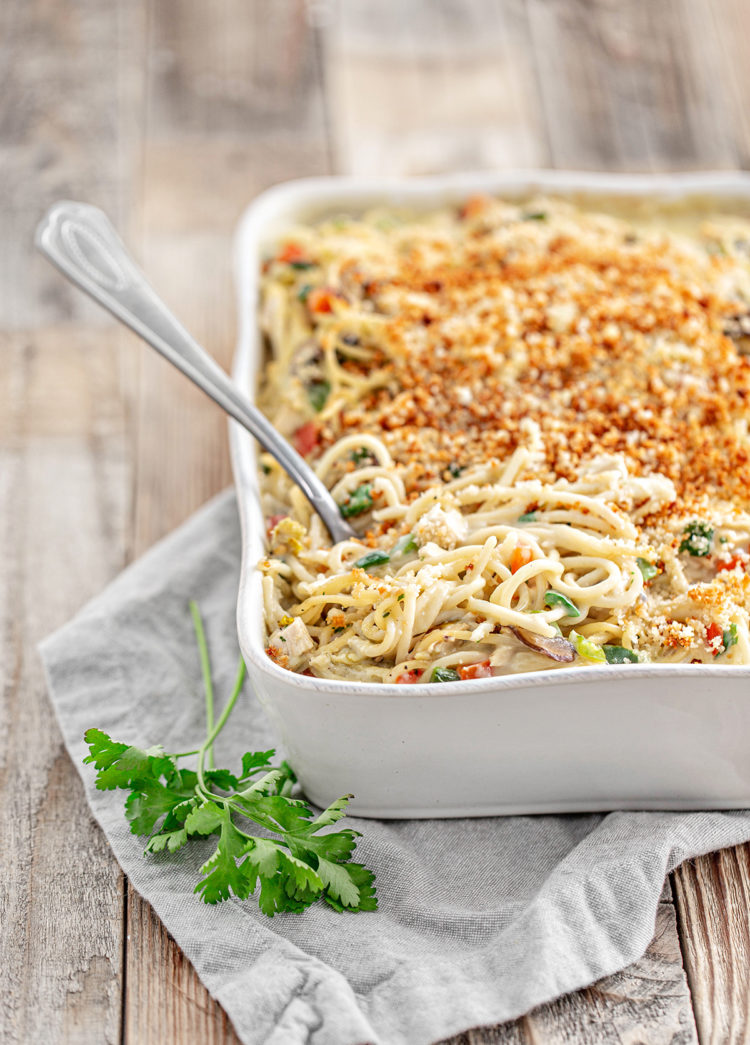
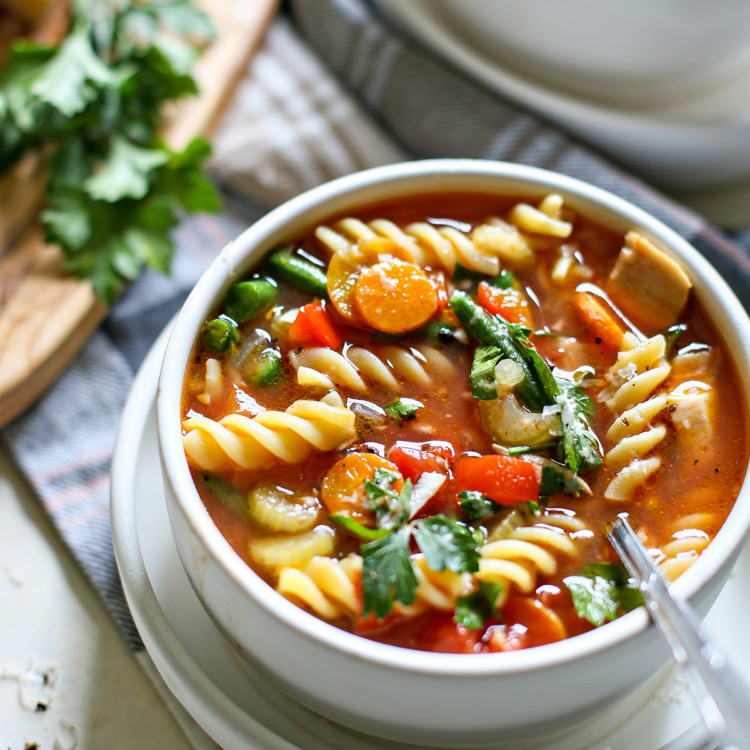

Christian Rene Friborg says
I honestly prefer gravy, so these tips are great!
Aimee @ Simple Bites says
I top my turkey with all of the above! Sauce and gravy. =) Awesome tips, Katie. Pinned!
Allison says
I normally have two servings of turkey – one with the gravy and one with the cranberry sauce. It would be too hard to choose between the two! Thanks for the great tips here Katie. Definitely making your cranberry relish again this year too.
Suzi says
If you don’t add salt to the water you cooked white potatoes in, that water will reduce the saltiness. Potato water also fabulous for No-knead Refrigerator bread.
Ali | Gimme Some Oven says
Great tips, Katie!!